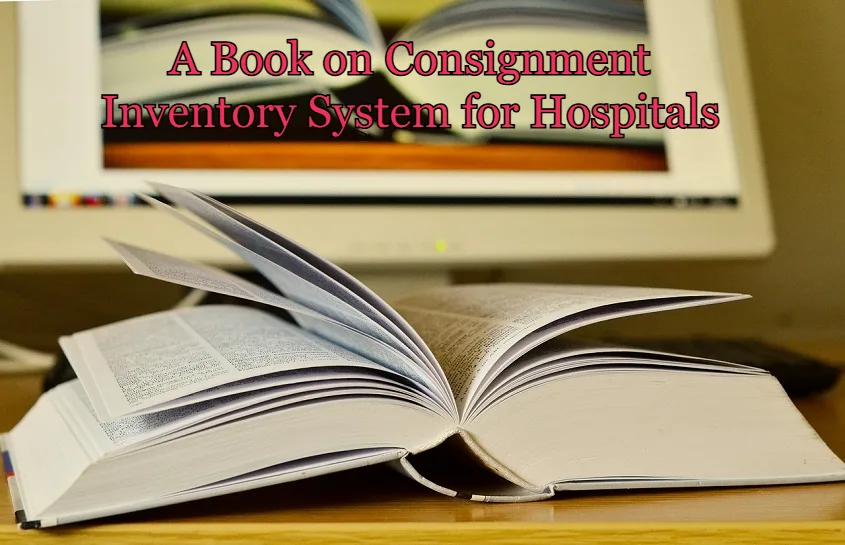If you’ve been searching for a book on consignment inventory system for hospitals, you’re probably looking for a complete, trustworthy resource, one that explains the concept in simple terms, provides practical steps for implementation, and addresses both the benefits and challenges specific to healthcare settings.
In hospitals, inventory management is not just a financial matter — it’s a life-or-death responsibility. Surgical instruments, high-cost implants, essential medications, and emergency equipment must always be available when needed. However, stocking these items in bulk can tie up large amounts of capital and increase the risk of waste through expiration or obsolescence.
That’s where the consignment inventory model comes in. This system allows hospitals to keep essential stock on-site without paying for it until it’s used. In effect, the supplier becomes a partner in the hospital’s supply chain, sharing responsibility for stock management, replenishment, and quality control.
This guide — designed in the spirit of a book on consignment inventory system for hospitals — covers everything from the basics to advanced strategies, helping healthcare administrators, supply chain managers, and procurement teams understand and optimize this powerful approach.
Chapter 1: What is a Consignment Inventory System for Hospitals?
A consignment inventory system is a supply chain arrangement where the supplier owns the inventory until it is consumed. The hospital stores and uses the items as needed, and payment is only made after the item is used in patient care.
Key Characteristics:
- Ownership: Remains with the supplier until usage.
- Payment Terms: Hospital pays only for items consumed.
- Stock Location: Stored within hospital premises for quick access.
- Management: Often jointly monitored by hospital staff and vendor representatives.
Chapter 2: Consignment Inventory vs. Traditional Inventory in Hospitals
The table below highlights the main differences:
| Feature | Traditional Inventory System | Consignment Inventory System |
| Ownership | The hospital owns stock immediately after purchase | Supplier owns stock until used |
| Upfront Cost | High — full payment upon delivery | None — payment only after usage |
| Risk of Expiry/Waste | High — hospital absorbs the loss | Low — unused stock can be rotated or returned |
| Cash Flow Impact | Reduces liquidity | Preserves hospital cash flow |
| Supplier Involvement | Minimal after delivery | Active in stock management and replenishment |
| Flexibility | Limited — stock tied to hospital | High — easier to adapt to demand changes |
Chapter 3: Benefits of the Consignment Inventory Model
A well-executed system can deliver significant advantages, many of which you’ll find in a book on consignment inventory system for hospitals:
- Improved Cash Flow – Hospitals avoid large upfront purchases.
- Reduced Waste – Unused products can be swapped before expiry.
- Increased Availability – Critical items are always on hand.
- Shared Accountability – Supplier and hospital both monitor stock levels.
- Better Vendor Relationships – Collaboration improves communication and trust.
- Regulatory Compliance – Easier tracking of serial numbers, lot numbers, and expiry dates.
Chapter 4: Challenges to Consider
While a book on consignment inventory system for hospitals would emphasize the benefits, it would also address potential challenges:
- Contract Complexity – Terms must be very clear to avoid disputes.
- Data Integration Issues – Systems must be compatible for real-time tracking.
- Space Requirements – Secure and organized storage is still necessary.
- Staff Engagement – Everyone from surgeons to supply chain staff must understand the process.
Chapter 5: Steps to Implement in a Hospital Setting
Step 1: Identify Suitable Products
Focus on items that are high-cost, low-turnover, or unpredictable in demand.
Step 2: Select the Right Vendor
Choose suppliers with proven experience in healthcare consignment.
Step 3: Negotiate Clear Terms
Include:
- Payment triggers
- Stock rotation and replenishment procedures
- Quality standards
- Liability responsibilities
Step 4: Integrate Technology
Use inventory management systems that support:
- Barcode scanning
- RFID tracking
- Expiry alerts
Step 5: Train Staff
Educate clinical teams and supply chain personnel on procedures and documentation.
Step 6: Monitor and Review
Hold quarterly performance reviews with vendors to ensure optimal efficiency.
Chapter 6: Technology’s Role in Consignment Systems
Modern hospital consignment systems depend heavily on technology for efficiency:
- RFID Tags for automatic stock movement tracking.
- Barcode Systems for quick usage logging.
- Cloud Platforms for shared access to inventory data.
- Analytics Tools for forecasting demand and reducing waste.
Chapter 7: Real-World Example
An orthopaedic surgery department partnered with a vendor for consignment implants:
- Vendor stocked a variety of implants in a secure cabinet inside the hospital.
- Each used implant was scanned into the system for payment tracking.
- Items nearing expiry were swapped by the vendor.
- Result: 20% reduction in working capital tied to stock and zero surgery delays due to unavailable supplies.
Chapter 8: Best Practices for Success
- Regular Audits – Maintain accuracy through physical counts.
- Clear Communication – Keep open lines with suppliers to address stock needs promptly.
- Performance Tracking – Monitor usage, availability, and savings.
- Emergency Protocols – Ensure backup plans for critical supplies.
- Annual Contract Review – Update terms as needed for changing conditions.
Chapter 9: Future Trends in Hospital Consignment Inventory
- Blockchain for secure, transparent transactions.
- AI-powered Forecasting to anticipate demand fluctuations.
- Sustainability Initiatives to reduce waste and carbon footprint.
- National Network Integration for better crisis supply management.
Conclusion
This guide serves as a book on consignment inventory system for hospitals, offering a comprehensive look at the model, its advantages, challenges, and step-by-step implementation. By adopting this approach, hospitals can achieve better cash flow, reduce waste, improve supply availability, and foster stronger vendor relationships.
When planned and executed correctly, a consignment inventory system becomes more than a supply chain strategy — it becomes a cornerstone of reliable, efficient, and patient-focused hospital operations.
